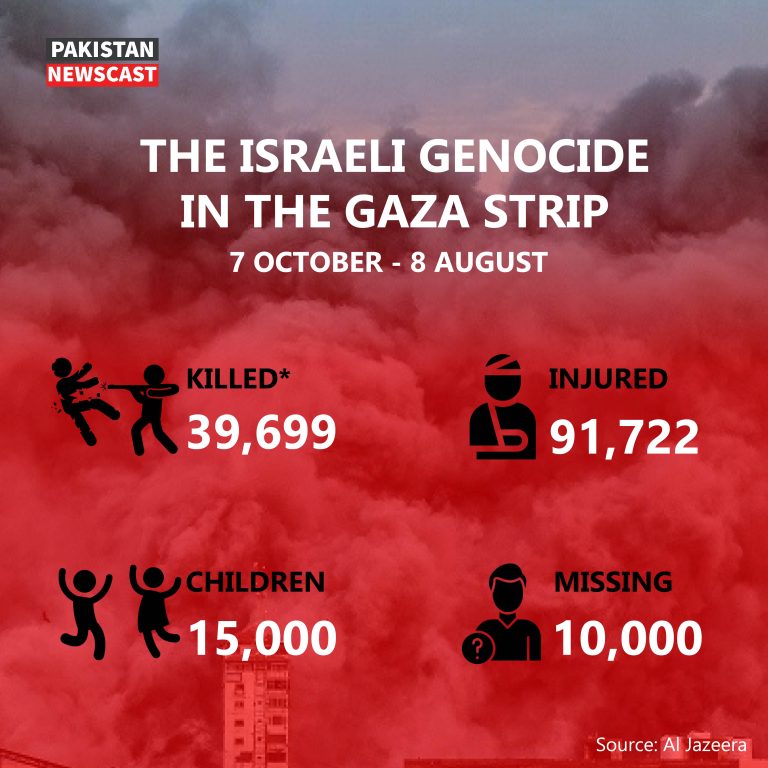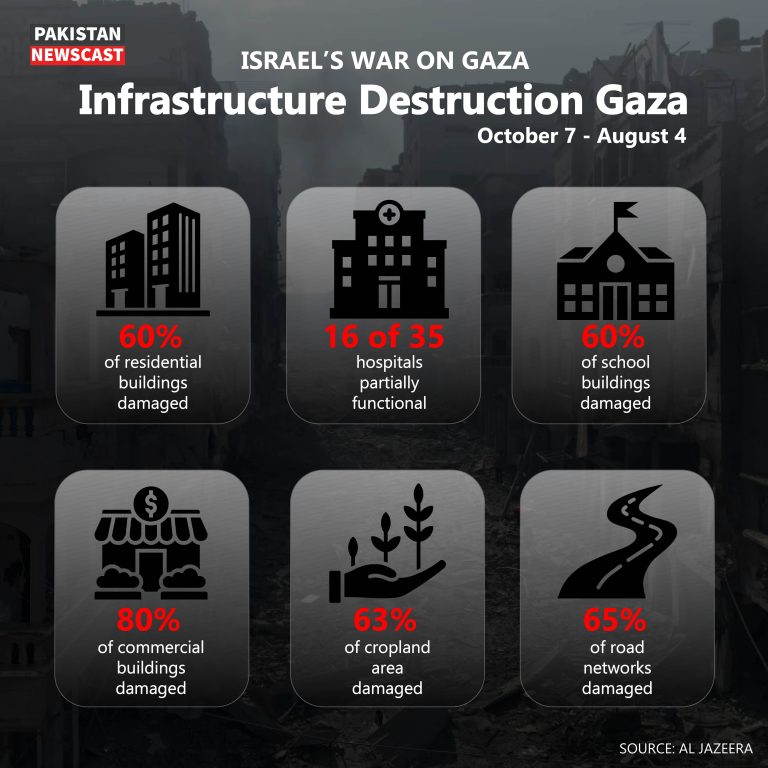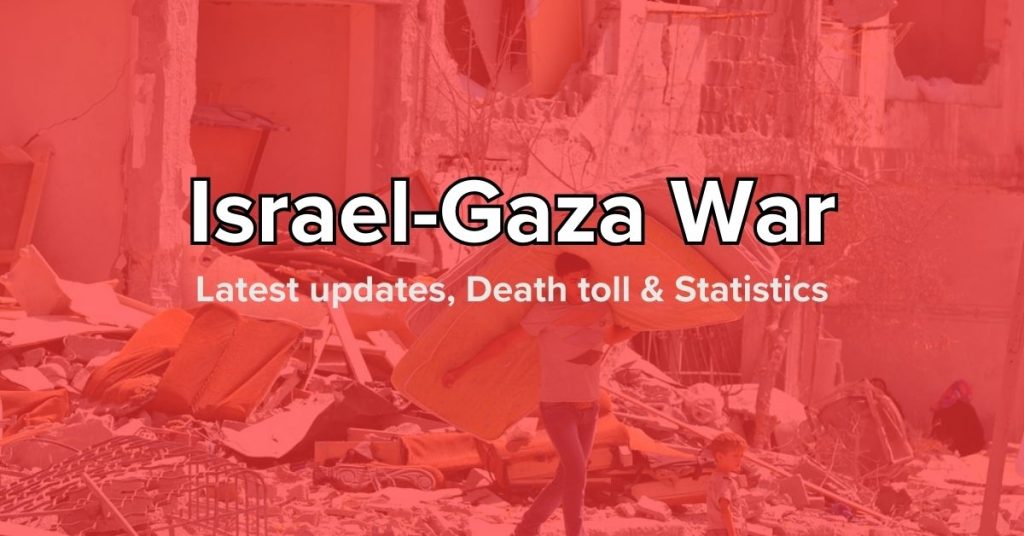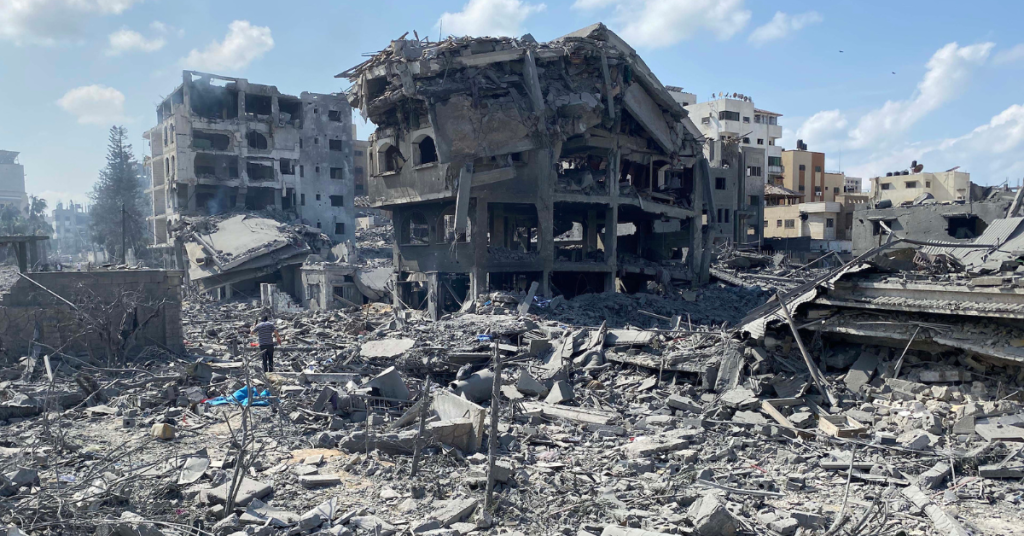Since Hamas’s attacks on southern Israel on October 7, Israeli Prime Minister Benjamin Netanyahu has threatened to make Gaza empty and has told its people to leave this place. The Israel-Gaza war is an ongoing humanitarian crisis that has resulted in more than 40,000 civilian casualties to date. The latest toll figures as of August 23 are here:
Gaza Strip
- Total population 2.3 millions
- At least 40,265 people killed
- Including More than 16,456 children killed
- Including More than 11,000 women killed
- More than 93,144 people injured
- More than 10,000 people are missing
West Bank
- At least 640 people killed
- Including more than 147 children
- More than 5,400 people Injured

Israel
In Israel, officials have lowered the number of deaths from the October 7 attacks from 1,405 to 1,139.
- 1,139 people killed
- At least 8,730 injured
Journalists Killed Since Oct 7
As of August 23, 2024, the statistics are :
- More than 100 journalists killed
- Mostly are Palestinians
According to CPJ’s report and the International Federation of Journalists, the statistics of journalists killed during Israel war on Gaza are bellow:
- At least 117 Palestinian
- 3 Lebanese
- 2 Israeli
Destruction Amid Israel Gaza War
According to the the latest data on destruction in Gaza the UN’s Office for the Coordination of Humanitarian Affairs, the World Health Organization and the Palestinian government, as of August 4 due to Israeli attacks have damaged several buildings.

- 80% of commercial facilities destroyed
- 85% of school buildings destroyed
- Only 16 out of 35 hospitals are partially operational
- 65% of road networks destroyed
- 63% of cropland area damaged
- More than half of Gaza’s homes have been damaged
No safe place to go in the Gaza strip
On December 1, the Israeli army shared a map online that split Gaza into over 600 sections. They informed people in Gaza to find their section on the map and be ready to leave when told.
However, the evacuation instructions on paper have not always been the same as what was posted online, leading to uncertainty between the residents.
In addition, many people in Gaza can’t easily access the map because they have little or no electricity or internet. This is due to the siege that has badly damaged the communication structures in the area.
Gaza strip is a small , densely populated area in the world. It is located between Israel and Egypt on the Mediterranean coast. Gaza is a territorial region which has a population about 2.3 million.
What happened on October 7?
6:30 AM (03:30 GMT): Hamas launched a massive rocket attack on southern Israel. Rockets were heard as far away as Tel Aviv and Beersheba. Hamas claimed to have fired 5,000 rockets, while Israel said it was 2,500.
1 Hour Later: Fighters from Hamas crossed into Israel using different methods—by land, air, and sea. Most entered through breaches in the security barriers between Gaza and Israel. This surprise attack followed recent violence, including Israeli settlers storming the Al-Aqsa Mosque and a high number of Palestinian casualties in 2023.
9:45 AM (06:45 GMT): Explosions were heard in Gaza.
10:00 AM (07:00 GMT): The Israeli military announced that their air force was attacking Gaza.
Throughout the Day: There were ongoing gun battles between Israeli forces and Palestinian fighters in southern Israel. Israeli airstrikes and rocket attacks continued into the night.
Key Historical Events
1948 Arab-Israeli War
Gaza came under Egyptian control and became a refuge for Palestinians who fled or were expelled during the 1948 Palestine war.
1967 Six-Day War
Israel captured and occupied the Gaza Strip, starting its long-term military occupation of Palestinian territories.
Mid-1990s Oslo Accords
The Palestinian Authority (PA) was established as a limited governing authority, initially led by Fatah.
2006 Elections
Hamas won the Palestinian legislative elections, leading to their takeover of Gaza in 2007 after a conflict with Fatah.
Early 1990s
Israel began imposing restrictions on movement and goods in Gaza.
2005
Israel withdrew its military forces from Gaza, dismantled settlements, and imposed a temporary blockade.
2007
Hamas took control of Gaza, leading to the indefinite Israeli blockade and the beginning of Egypt’s blockade of Gaza. Since 2007, Israel has tightly controlled Gaza’s airspace and waters, limiting the movement of goods and people in and out of the area.
Ongoing Blockade
Despite Israel’s disengagement, the UN and human rights organizations still consider Gaza under Israeli military occupation due to Israel’s control over the territory. The blockade restricts movement and goods, leading to Gaza being called an “open-air prison.”
Since Hamas’s attacks on southern Israel on October 7, Israeli Prime Minister Benjamin Netanyahu has threatened to make Gaza empty and has told its people to leave this place.
Israel and Egypt have largely closed their borders with Gaza. This closure worsens the economic and humanitarian conditions in Gaza strip.
Administrative units of Gaza
The Gaza strip consists of five governorates: North Gaza, Gaza City, Deir el-Balah, Khan Younis and Rafah.
Gaza city
Gaza city is the most popular and largest city with over 750,000 people. Its known neighborhoods include Remal, Shujayea, and Tal al-Hawa. It also contains al-Shifa Hospital, which provides the biggest medical facility in Gaza city.
North Gaza
Expands 10 km (6 miles) long and shares the only crossing into Israel called Beit Hanoon or Erez. North Gaza is a home to Jabalia refugee camp, the largest camp in Gaza.
Deir el-Balah
One of Gaza’s main agricultural areas. It has four refugee camps: Nuseirat, Bureij, Maghazi, and Deir el-Balah. Gaza’s only working power plant is located here.
Khan Younis
It has Population of about 430,000 residents. Home to Khan Younis refugee camp with around 90,000 people.
Rafah
Rafah is the Southernmost district which has a population of about 275,000 residents. Rafah has a crossing with Egypt.


